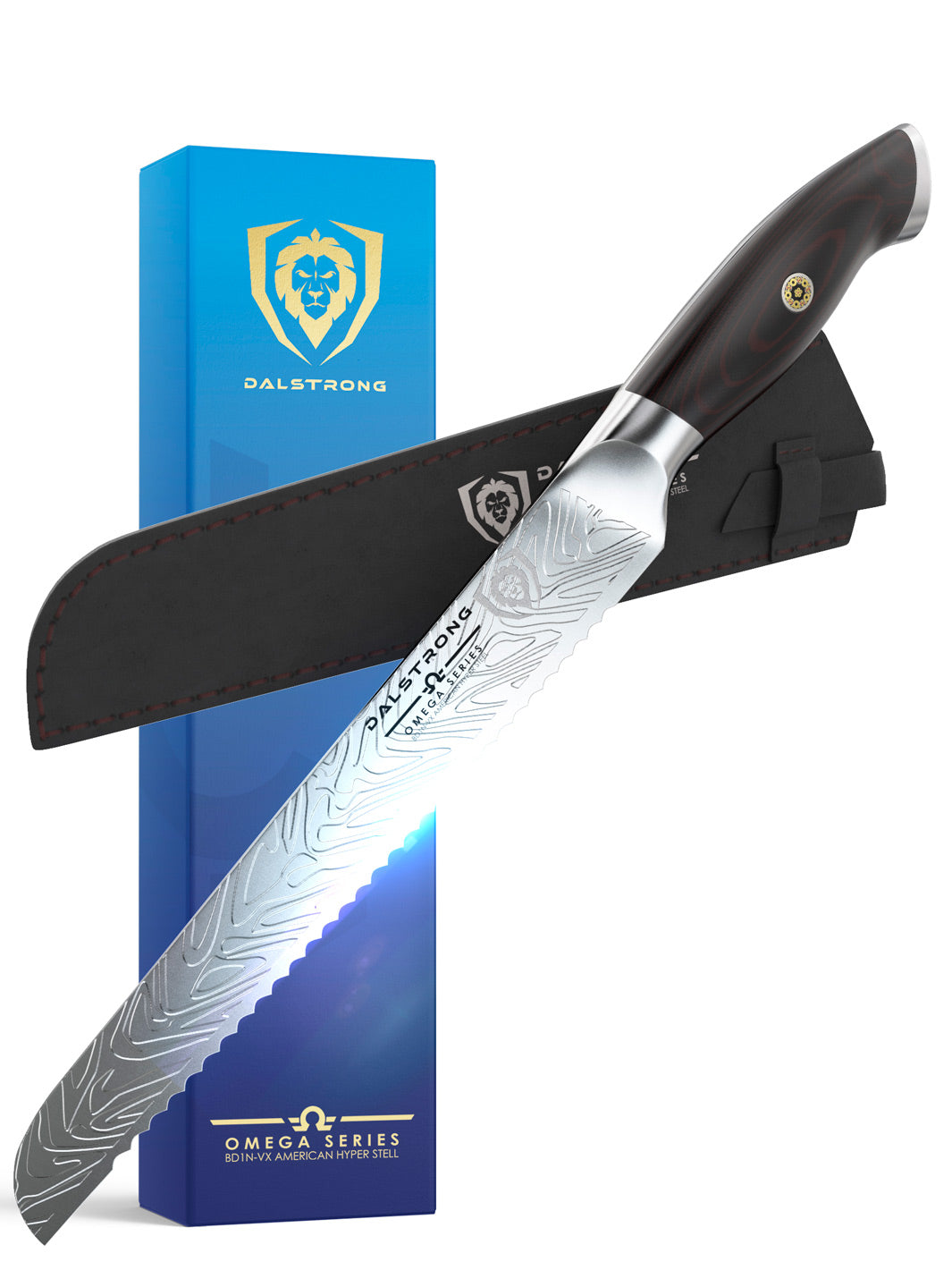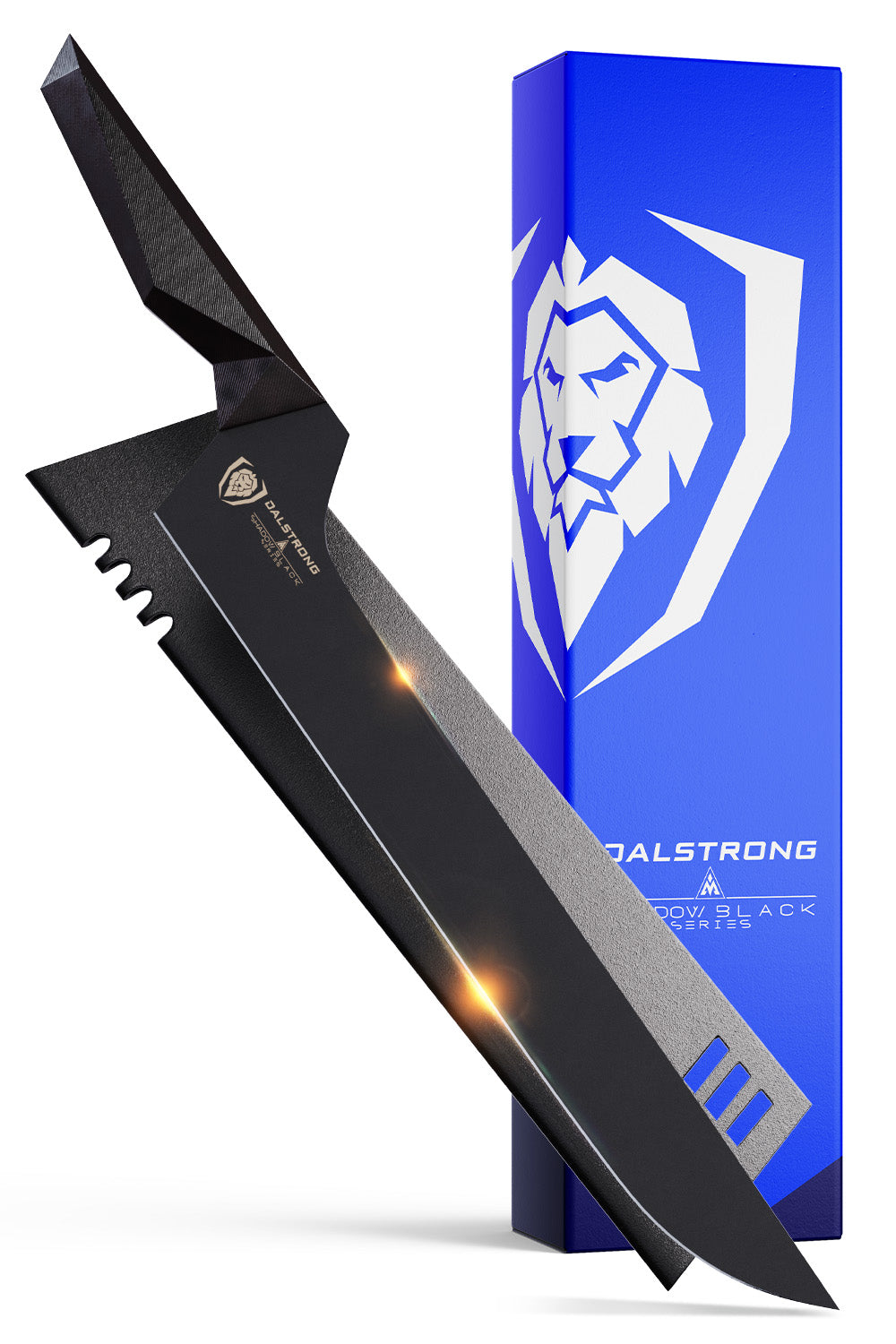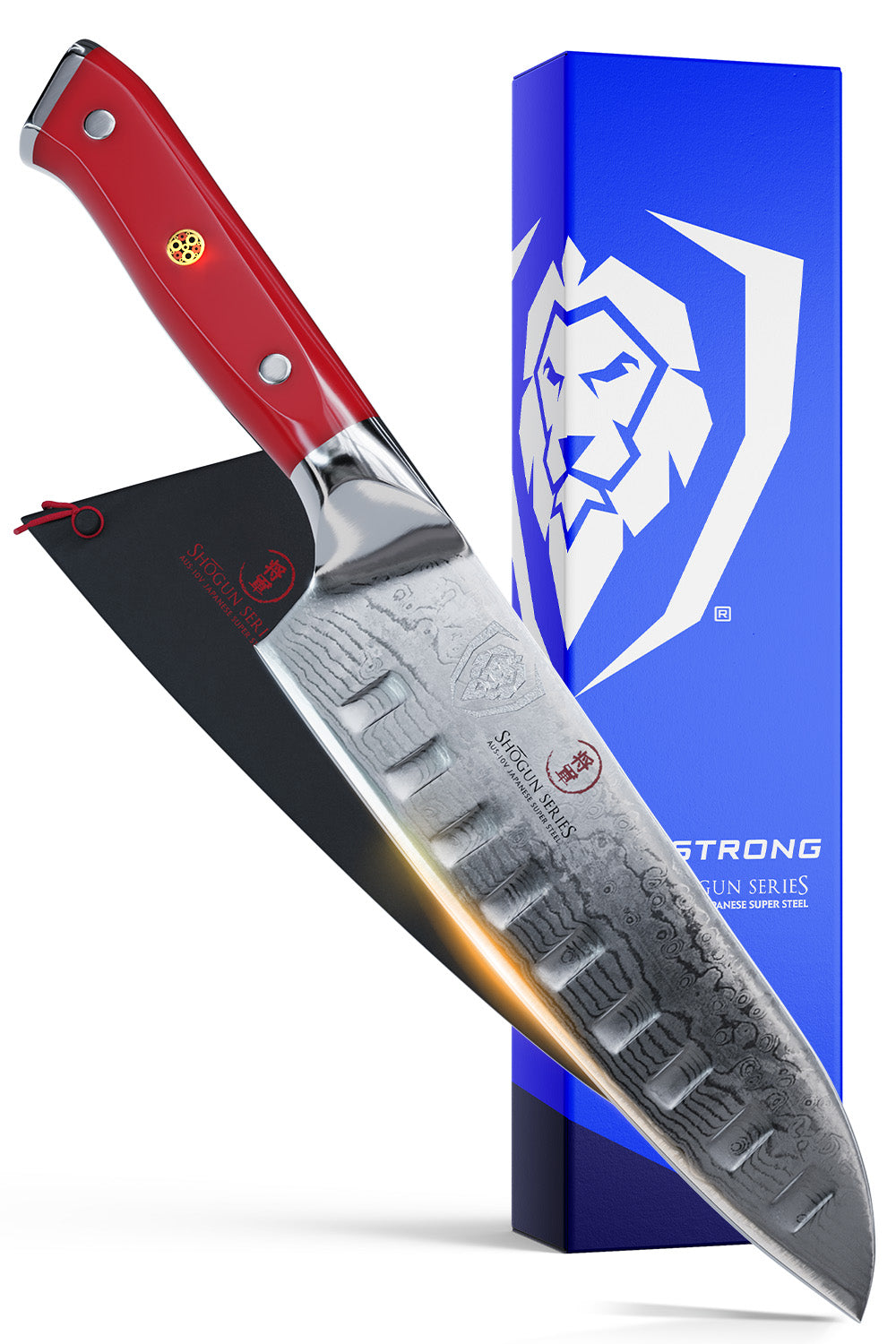 Professional Kitchen Scissors 420J2 Japanese Stainless Steel | Dalstrong
Professional Kitchen Scissors 420J2 Japanese Stainless Steel | Dalstrong
Quick Overview: How To Peel And Devein Shrimp
- Remove the shell, keeping the tail intact.
- Make a slit along the back and remove the vein.
- Rinse the shrimp thoroughly and dry them on a paper towel.
- Cook right away or store properly.
1. How To Thaw Frozen Shrimp

Thawing frozen shrimp properly is important to ensure that they remain safe to eat and have the best texture and flavor. There are a few methods you can use to thaw frozen shrimp safely:
Refrigerator Thawing (Recommended)
Place the frozen shrimp in a bowl or airtight container and leave them in the refrigerator to thaw. This is the safest method as it prevents the growth of harmful bacteria. Depending on the size of the shrimp, it might take several hours or overnight for them to thaw completely. Once it's thawed, you can store them in the fridge for a day or two before cooking.
Cold Water Thawing
If you need to thaw shrimp faster, follow the cold water thawing method. Place the frozen shrimp in a sealed plastic bag to prevent water from getting in. Submerge the plastic bag in a bowl of cold water. Make sure to change the water every 30 minutes to ensure it stays cold. Small amounts of shrimp might thaw in about 1-2 hours using this method.
Microwave Thawing (if cooking immediately)
If you plan to cook the shrimp immediately after thawing, you can use the microwave. Put the shrimp in a microwave-safe container and use the defrost setting or a low-power setting. Be very careful with this method, as shrimp can easily become partially cooked or rubbery if overcooked in the microwave.
It's important to note a few safety tips:
- Do not thaw shrimp at room temperature to avoid the growth of harmful bacteria.
- Do not thaw shrimp using hot water or by leaving them out on the counter.
- Do not refreeze shrimp that have been thawed to maintain the quality.
After thawing shrimp using any of the methods mentioned above, make sure to rinse them in cold running water to remove bits of ice crystals before cooking. Thawed shrimp should be used promptly to ensure the best quality and taste.
2. How To Peel And Devein Shrimp Step-By-Step

Peeling and deveining shrimp can be a bit time-consuming but is worth the effort to enhance the taste and texture of your dish. Remember, practice makes perfect, and that is also true when it comes to peeling and deveining shrimp. It might take a bit of time initially, but with practice, you'll become more efficient at the process.
Here's a step-by-step guide on how to peel and devein shrimp:
Materials you'll need:
- Frozen or fresh shrimp
- Cutting board
- Paring knife or shrimp deveiner tool
- Bowl of cold water
- Paper towels
Steps:
- Prepare the Shrimp. Fresh shrimp is always the best choice. It saves you time from thawing. But if using frozen shrimp, thaw them using one of the methods mentioned earlier. Once thawed, rinse the shrimp under cold water to remove any ice crystals and loosen them up.
- Remove the Shrimp Shells. Hold the fresh shrimp in one hand and use your other hand to gently peel off the shell. You can start by grabbing the legs and pulling off the shell, starting from the head end and working your way toward the tail.
- Keep the Tail Intact (optional). Some shrimp recipe call for leaving the tail intact for presentation purposes. If you prefer, you can leave the tail on by carefully removing the shrimp shells around it while leaving the last segment of the shell and the tail itself.
- Make a Slit Along the Back. Once the shrimp shells are removed, you'll notice a dark "vein" running along the back of the shrimp. This is the digestive tract. Take a sharp paring knife or a specialized shrimp deveining tool, and gently make a shallow incision along the back of the shrimp, following the line of the vein.
- Remove the Vein. You can now see the vein exposed in the slit you made. Depending on your preference and the size of the shrimp, you can either use the tip of the knife or your fingers to grasp the vein and pull it out. The vein might come out easily, but if it breaks, you can continue using the knife or your fingers to lift it out in smaller segments.
- Rinse the Peeled Shrimp. Once the vein is removed, rinse the shrimp under cold running water to wash away any remaining debris or traces of the vein.
- Dry the Shrimp. Place the peeled and deveined shrimp on a paper towel to absorb excess moisture. Pat them dry gently with another paper towel. Dry shrimp will cook more evenly and develop a better sear or browning when cooked.
- Cook or Store. You can now use the peeled and deveined shrimp in your desired recipe immediately (Check out this easy Garlic Butter Shrimp Recipe here). Raw or cooked shrimp can also be stored in the refrigerator for a short period of time if needed.
3. Recommended Dalstrong Tools
1. Bird’s Beak Paring Knife 2.75”- Shadow Black Series | Dalstrong
Paring knives like this sleek 2.75" from the Dalstrong Shadow Black Series is your go-to knife for delicate tasks such as deveining shrimp. This knife features a sharp cutting edge, sleek black style, and snug grip.
Pros:
- Midnight black titanium-nitride coating brings effortless sophistication.
- Resistant to corrosion and has enhanced non-stick properties.
- Low maintenance and easy to clean.
Cons:
- The all-black design might not be for everyone with a minimalist design taste.
2. Paring Knife 3.5" - Frost Fire Series
This elegant paring knife from the Frost Fire Series is all you need for peeling and deveining pieces of shrimp. The length of its razor-sharp blade is ideal for working on either small or big shrimps. Engineered with 7-layer high-carbon steel with added cobalt and expert heat treatment.
Pros:
- Very durable with its engineered with 7-layer high-carbon steel
- Full tang, providing robustness and a more secure grip.
- This sharp paring knife features a classy design perfect for those who want both form and function.
Cons:
- The design might be too feminine for some. In that case, you may want to check out other options from our paring knife collection here.
3. Professional Kitchen Scissors 420J2 Japanese Stainless Steel

This professional kitchen scissor by Dalstrong is perfect for cutting shrimp shells and trimming them for plating or appetizers. Not only for shrimp, but the tool is also great for cutting bacon, pasta, and other ingredients.
Pros:
- Stain resistant and is made to last with its premium Japanese stainless steel.
- Features detachable blades for easier cleaning.
- This is perfect for cutting open shrimp and lobster in one go.
Cons:
- You may not need this scissor if you prefer using a sharp paring knife when deveining the shrimp.
4. Professional Chef’s Kitchen Apron- American Legend | Dalstrong
Peeling and deveining shrimp can be messy. This lightweight denim apron by Dalstrong can shield your clothes from the mess and can be great storage for your tools while cooking.
Pros:
- The classy and comfortable denim design will make you stylish while cooking even in the years to come.
- Water-repellent and low-maintenance.
- Features an adjustable neck strap and tie for a perfect customized fit.
Cons:
- The material might not be ideal for busy professional kitchens. For a sturdier working environment, you might want to take a look at this apron.
5. Teak Cutting Board- Medium Size | Dalstrong
A sturdy cutting board like this perfectly sized medium teak board is a must in every kitchen. It is made of 100% sustainably sourced Tropical Teak Wood, providing both aesthetics and function.
Pros:
- Very high-quality and will help protect the blade of the knife when chopping, cutting, or mincing on the board.
- It features lasered measurement lines for easier and more precise cuts.
- This aesthetically pleasing board can also be used as a serving tray.
Cons:
- Might be too small for cutting larger vegetables and meat.
4. Frequently Asked Questions
Do I have to devein unpeeled shrimp?
Deveining unpeeled shrimp is a recommended step. The "dark vein" is the digestive tract, and while safe to eat, it can sometimes contain grit or impurities. Removing it improves texture and taste. Peeling before cooking is optional, but deveining the shrimp ensures a cleaner, more appealing result in your culinary creations.
Do you peel and devein shrimp before or after boiling?
It's generally advisable to peel and devein shrimp before boiling. Peeling shrimp allows flavors to better penetrate the meat when cooking, and deveining the shrimp ensures a cleaner taste. While some recipes call for boiling with shells for enhanced flavor, deveining prior to boiling ensures a more convenient and enjoyable dining experience, allowing you to savor the shrimp without interruption.
How do you peel and devein frozen shrimp?
To peel and devein frozen shrimp, thaw them first using the refrigerator method. Once thawed, hold the shrimp and gently remove the shell by starting at the head and peeling towards the tail. Make a shallow incision at the back of the shrimp to expose the vein. Use a knife or fingers to remove the vein. Rinse the shrimp and proceed with your recipe.
Do you need to devein both sides of shrimp?
No, you typically only need to devein one side of the shrimp. The dark vein, which is the digestive tract, runs along the back, usually on the curved side. Once you've removed the vein from that side, the shrimp is ready for cooking. The other side is usually free of veins.













